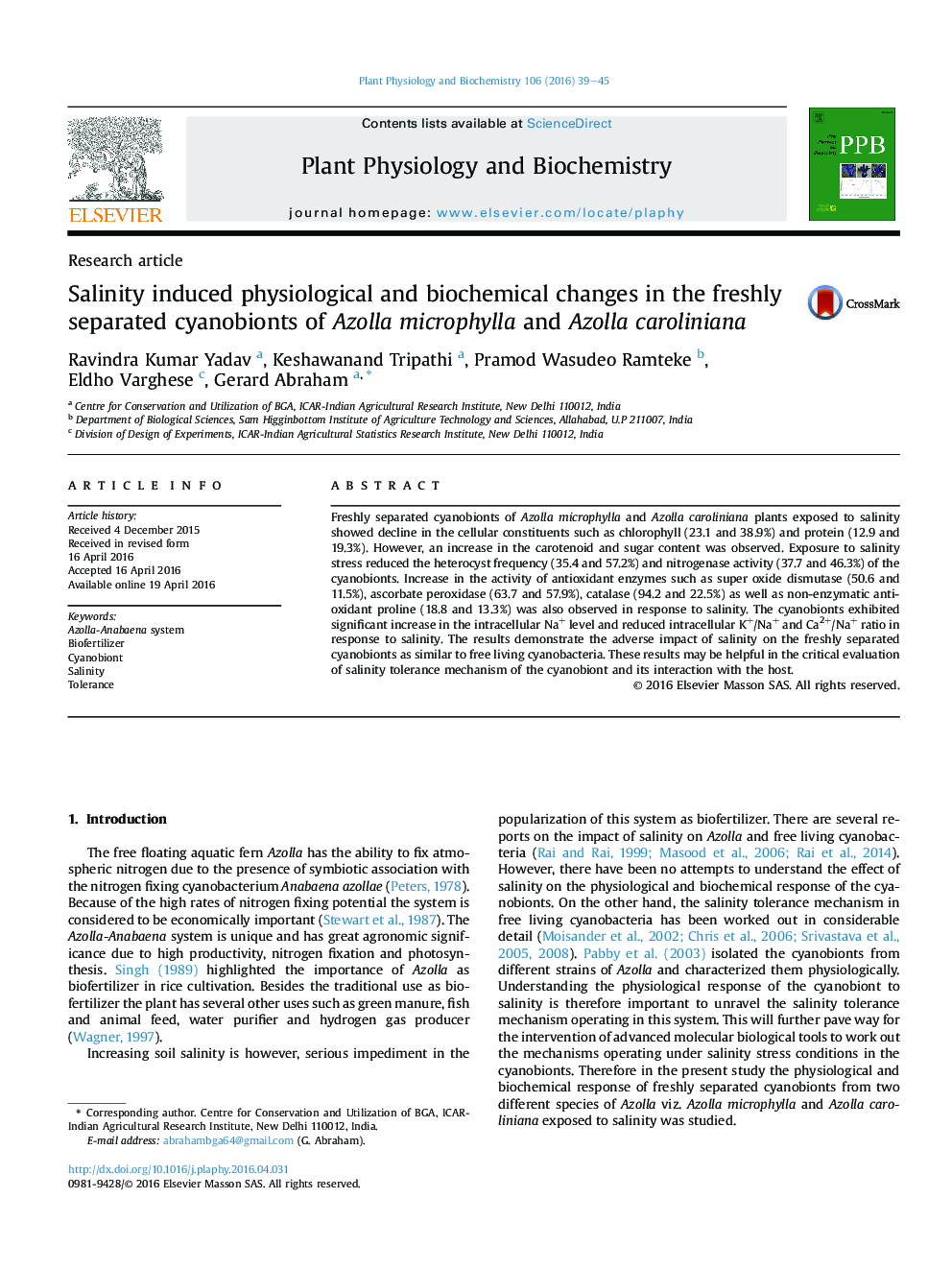| Article ID | Journal | Published Year | Pages | File Type |
|---|---|---|---|---|
| 8353844 | Plant Physiology and Biochemistry | 2016 | 7 Pages |
Abstract
Freshly separated cyanobionts of Azolla microphylla and Azolla caroliniana plants exposed to salinity showed decline in the cellular constituents such as chlorophyll (23.1 and 38.9%) and protein (12.9 and 19.3%). However, an increase in the carotenoid and sugar content was observed. Exposure to salinity stress reduced the heterocyst frequency (35.4 and 57.2%) and nitrogenase activity (37.7 and 46.3%) of the cyanobionts. Increase in the activity of antioxidant enzymes such as super oxide dismutase (50.6 and 11.5%), ascorbate peroxidase (63.7 and 57.9%), catalase (94.2 and 22.5%) as well as non-enzymatic antioxidant proline (18.8 and 13.3%) was also observed in response to salinity. The cyanobionts exhibited significant increase in the intracellular Na+ level and reduced intracellular K+/Na+ and Ca2+/Na+ ratio in response to salinity. The results demonstrate the adverse impact of salinity on the freshly separated cyanobionts as similar to free living cyanobacteria. These results may be helpful in the critical evaluation of salinity tolerance mechanism of the cyanobiont and its interaction with the host.
Related Topics
Life Sciences
Agricultural and Biological Sciences
Plant Science
Authors
Ravindra Kumar Yadav, Keshawanand Tripathi, Pramod Wasudeo Ramteke, Eldho Varghese, Gerard Abraham,
